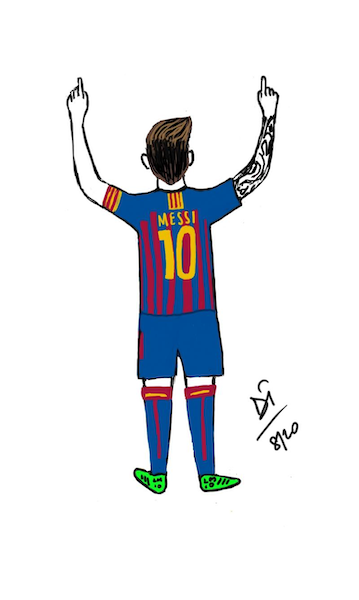Business Lessons from Soccer for Chief Supply Chain Officers
– By Dhaval Thanki, Vice President (APAC & MENA), LogiNext
Soccer offers a goldmine of lessons for business. For us folks in the world of logistics management, route optimization software, fleet management solutions, and such, what can it offer?
Chief Supply Chain Officers are folks who are at the helm of operations that ensure that every package, shipment, or order of any size, shape or form, reaches the people and businesses seeking it, on time and at optimum delivery costs.
Three things they would want to solve for are:
- Delivery time
- Delivery cost
- Great customer experience
And that’s where concepts like logistics planning, supply chain automation, last mile tracking, transportation management software, route optimization software, fleet management software, on-demand delivery, etc come into play.
There are some interesting lessons from soccer that can benefit the Chief Supply Chain Officers, particularly in the context of choosing the right software platform for managing their operations.
Let’s see what these lessons are:
It’s all about the “field” operations!
A soccer game moves in the “field” through 3 fundamental regions – Defense to Midfield to The Final Third (also called the forward region). The “field” in the world of logistics comprises First Mile, Middle Mile & Last Mile.
First-mile is the movement of goods from a manufacturer’s or retailer’s warehouse to a hub (from where a logistics partner, carrier, or shipping company takes the goods forward). Last-mile is the movement of goods from a hub to a customer’s doorstep. All movements between the First mile and Last mile constitute the Middle mile.
So Defense – Midfield – The Final Third map into First Mile – Middle Mile – Last Mile. The Last Mile or The Final Third is the most important one, both in soccer as well as for supply chain management.
Once we have established this mapping, it’s easier to understand the overall soccer analogy in the context of the supply chain world.
How the ball or the package moves through the “field” decides the value creation, measured in terms of goal scored or package delivered on time, and other such metrics.
Move the ball forward
As you would’ve guessed the “ball” in soccer is equivalent to the “package” or “order” or “shipment” in the supply chain world. The objective in soccer is to move the ball forward and eventually score a goal. In the supply chain world, it’s about moving the package forward to eventually deliver it to the end customer.
Now to move the ball forward and score a goal, there are different strategies – some teams like to go all out and attack (full offensive mode), some teams like to keep possession and build towards a goal, some teams like to sit back and get aggressive only on the counter-attack, and so on. Each team chooses a strategy in a game based on their own constraints like their situation in the game, the players they have, etc.
The strategy they choose will decide how the ball will move through the field.

What does this tell us?
In the supply chain world, different companies at different points in time might have different strategies for delivery, based on their constraints. Sometimes they want to focus on “cost optimization” sometimes they would want to focus on “time optimization” or “resource utilization” and so on. There are different route planning and optimization approaches for each of these strategies, and each approach has its own cost, time & resource implications.
The strategy they choose will decide how the package will move through the field.
Having the flexibility to choose the right strategy is paramount to the success of any supply chain operation. Much like the way it is in soccer.
Therefore a good route planning software should offer this flexibility to Chief Supply Chain Officers to help them achieve their objectives from time to time.
Assign Tasks Based on Skills
Every player in a team has a certain kind of skill and therefore certain tasks in a game are assigned to a certain player. For example Ronaldo or Messi will always be the one to take the “free kick” or a “penalty shot” or for example, Kevin De Bruyne or Toni Kroos would usually be the one taking corner kicks and so on.

In the supply chain world, there are certain delivery associates who possess specific types of skills relevant for certain tasks, for example, if companies want to do “important documents delivery” like Passports or Bank documents, etc, they will want to use only a certain type of delivery associates who could be trusted with such deliveries. Or say for moving certain categories of shipments (for example vaccines), companies would use only those categories of drivers/vehicles who have the skills/capabilities to do so (cold storage capabilities, etc).
So your logistics automation and planning software should be able to offer this ability to assign orders based on the “skills” required for delivery.
The Final Third
The quest for a goal is the most accentuated in the final third. This is the area closest to the opposition’s goal post. This is the “last mile”! Whether one is able to score a goal or not depends on how they manage their last mile or final third operations in the football field.
One thing great teams do in the last mile is that they manage “rebounds” very well. A “rebound” is when a striker attempts a shot on the goal, and the ball doesn’t go into the net, but hits the woodwork or deflects from the hands of the goalkeeper and comes back into open play. So now they can attempt to convert it again. Great teams will usually have players who will always arrive in interesting positions to take advantage of such situations. So if a player misses a goal due to a “rebound” another player would be available to “re-attempt” the goal on the rebound to convert it on the second attempt.
What does this tell us?
In last mile operations, there are chances of unsuccessful deliveries (for various reasons) where the last mile delivery associate would need to re-attempt the delivery. Now if your last mile tracking and optimization software have the capability to automatically “re-attempt” deliveries it will make your overall delivery success metrics look great.
Also, in the final third, “allocating” the ball to the right player at the right time is more crucial than ever because, it’s really in the final third, where most games are won or lost.
Similarly, in the supply chain world, it’s very important to be able to have efficient and optimum last mile operations. One very interesting feature that could help Supply chain managers, in this case, is “auto allocation”. Through auto-allocation, your delivery management system, for every incoming order, could automatically “allocate order” to the “most relevant” delivery associate to ensure optimum deliveries in terms of time, cost & customer experience.
Visibility of the Ball
The most important thing in soccer is the visibility of the ball. The better the visibility of the ball for every player, the more efficient your game is, and the higher your chances of success. This is also why the term “eyes on the ball”!
What does this tell us?
Well, supply chain managers would agree that the visibility of the package is the most important thing in the world of logistics as well. How does your Logistics Management Software provides end to end visibility for every package to all the stakeholders (supply chain managers, shippers, dispatchers, carriers, customers) is an important question to ask.
Being able to “see” the package all through empowers the supply chain and most importantly the customer to help achieve a great delivery experience.
These insights from soccer can guide Chief Supply Chain Officers in selecting appropriate Logistics Software Solutions, including supply chain visibility software, ensuring effective solutions for their specific use cases.
107







@LogiNext